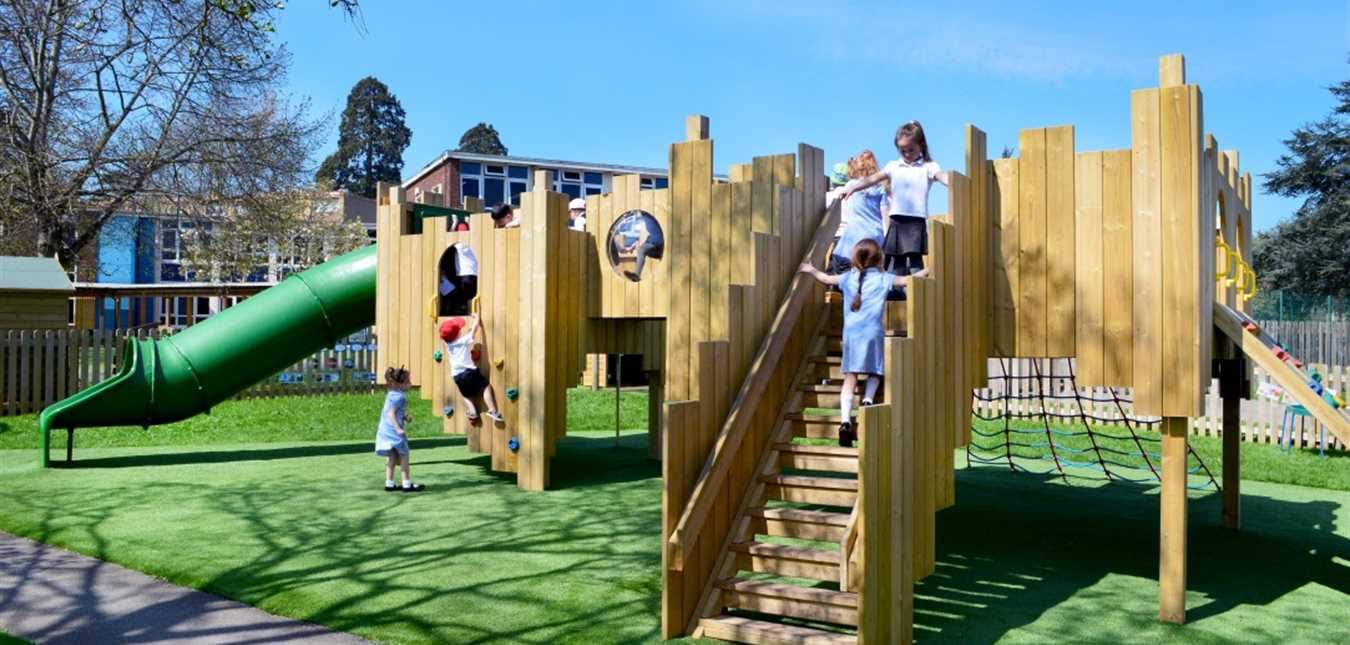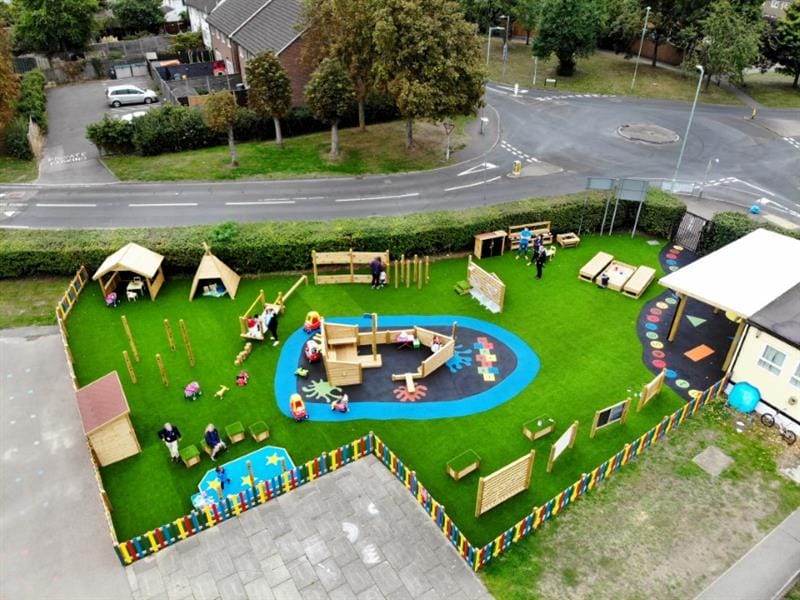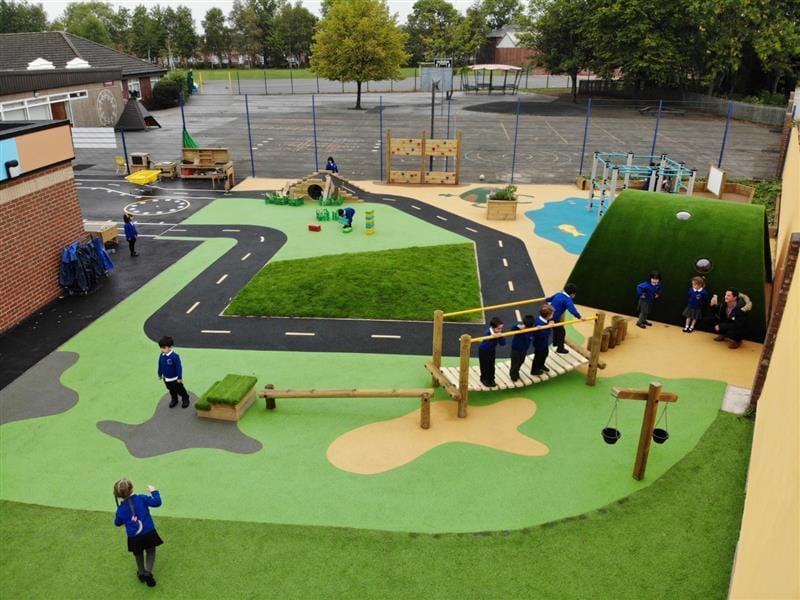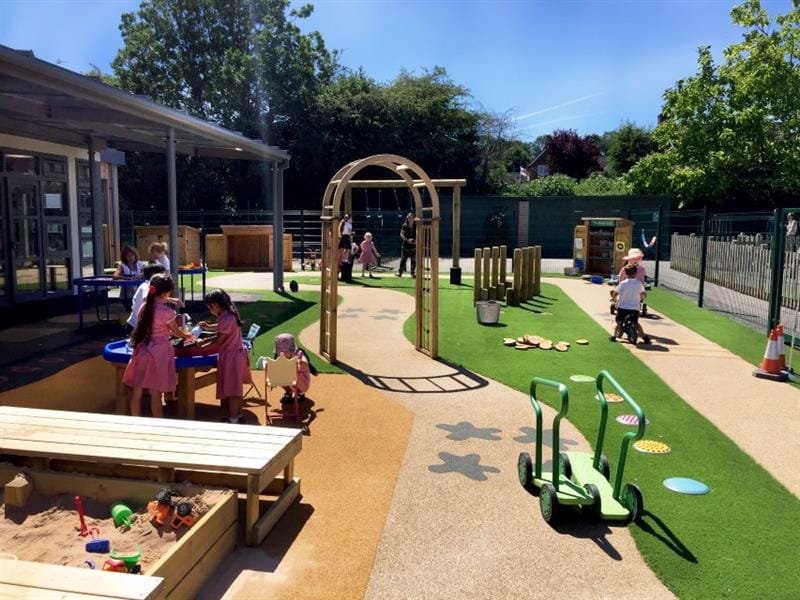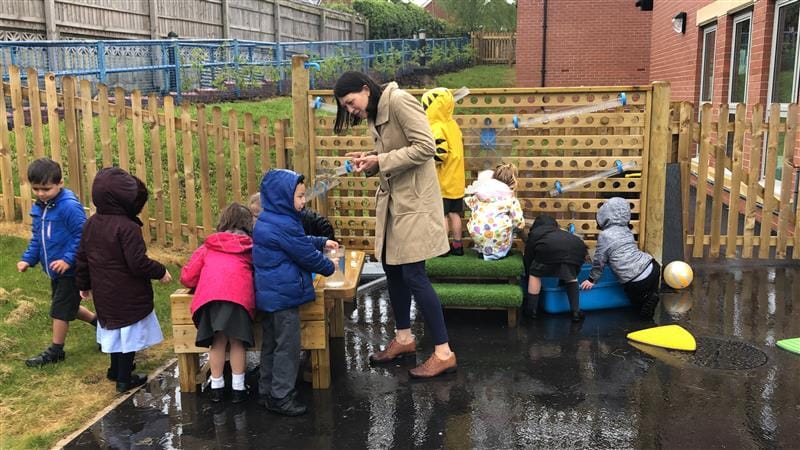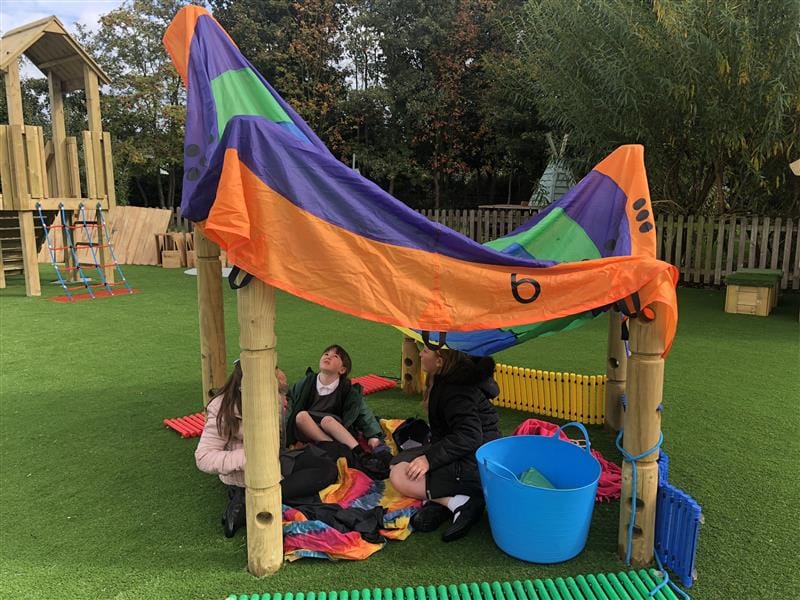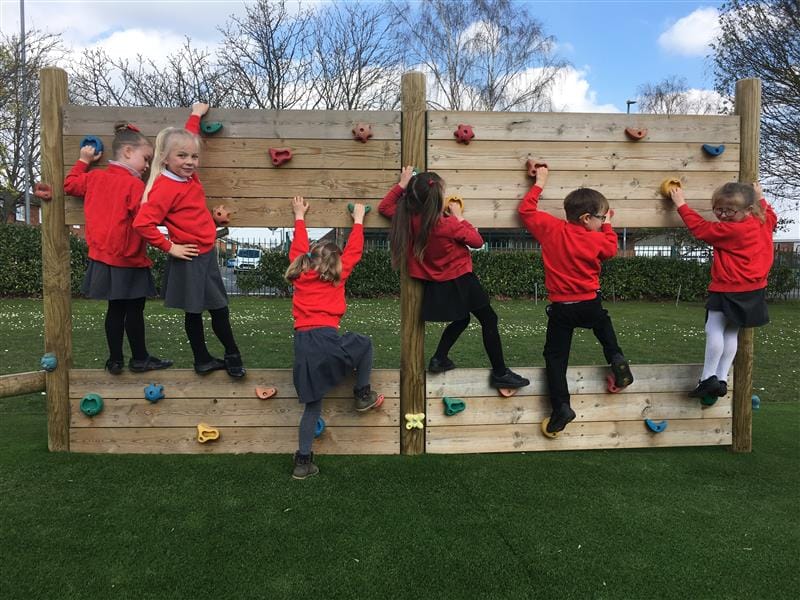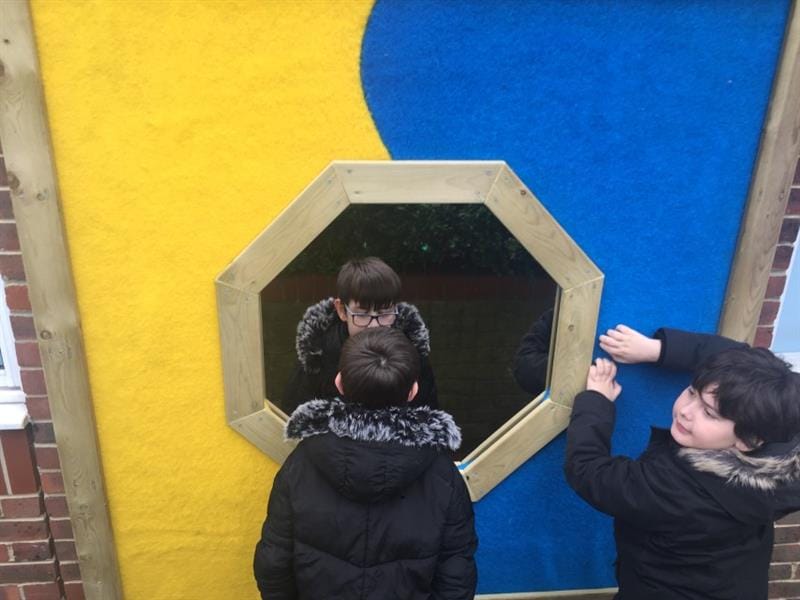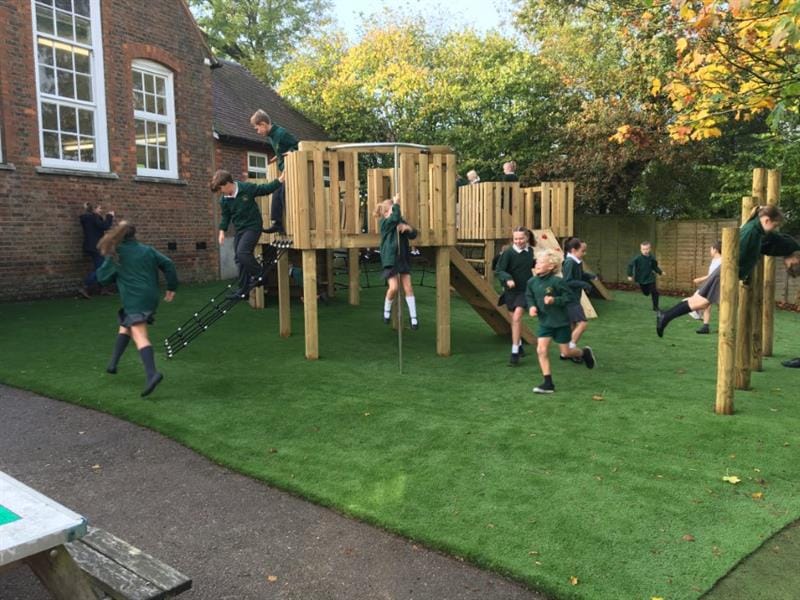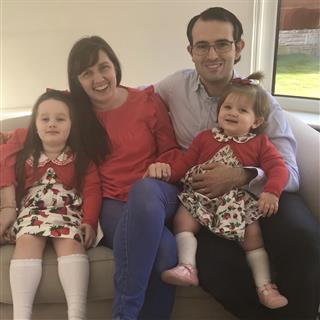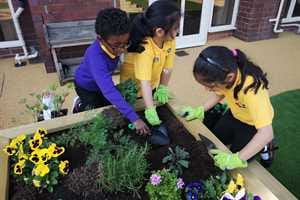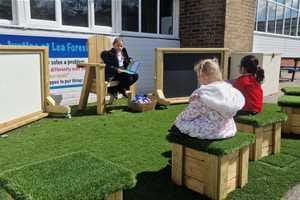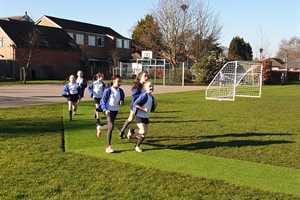
Outdoor Learning and Play
Can you identify when your child is engaging in schematic play?!
Recognising and Enhancing Schematic Play
Have you ever observed a child continually line up their cars, build homes for the animals or move different objects around the room?
When certain actions are continually repeated and children seem to be compelled to complete them it is possible that children are engaging in schematic play.
This type of play happens when babies, toddlers and young children are involved in repeated actions and certain behaviours throughout many areas of their learning.
This can be an important step in young children’s understanding of the world and themselves. Repetitive actions allow children to construct meaning through senses and movement.
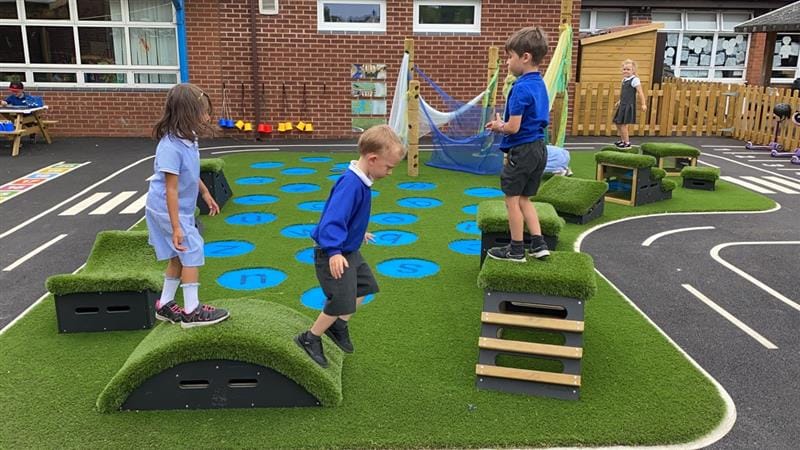
When children are exploring their schemas, they are usually highly engaged and absorbed in their task which can spark new ideas, consolidate learning and aid critical thinking.
What is a schema?
The idea of schemas in early childhood originated from psychologist Jean Piaget who believes that schemas are cognitive frameworks or concepts that help children to organise and interpret information.
Piaget discovered that schemas can help professionals to scaffold learning around children’s understanding of their world, building upon previous learning to expand children’s concepts and ideas.
Schemas can vary in different children and some may never display schematic play or behaviours.
Children can exhibit behaviour related to one or two schemas or they may exhibit many.
Schemas are not fixed; a child may work within one schema for weeks or months and then develop different play tendencies.
A child may heavily work within one particular schema for a number of years. Children of different ages and stages of development can be working in the same schema as they lean, grow and develop understanding.
In this blog I will explore each schema in more detail. Understanding schemas helps practitioners when observing, assessing and planning for next steps in development.
Trajectory
The trajectory schema is one of the earliest observed in babies, who are fascinated by how objects move.
Children working in this schema will throw and drop items possibly from high chairs and prams.
They are likely to jump, run and try to interrupt moving objects including running water. Pentagon’s Water Wall supports play in this schema as children will enjoy watching the water move through the channels and learn how to stop the flow.
Children may also enjoy chasing and catching bubbles, throwing balls and beanbags at targets or dropping objects through cardboard tubes.
Additional activities to support this schema could include attaching a paintbrush to a tripod using sticks and string and painting with a pendulum action. Yo-yos and simple skittle games would also beuseful.
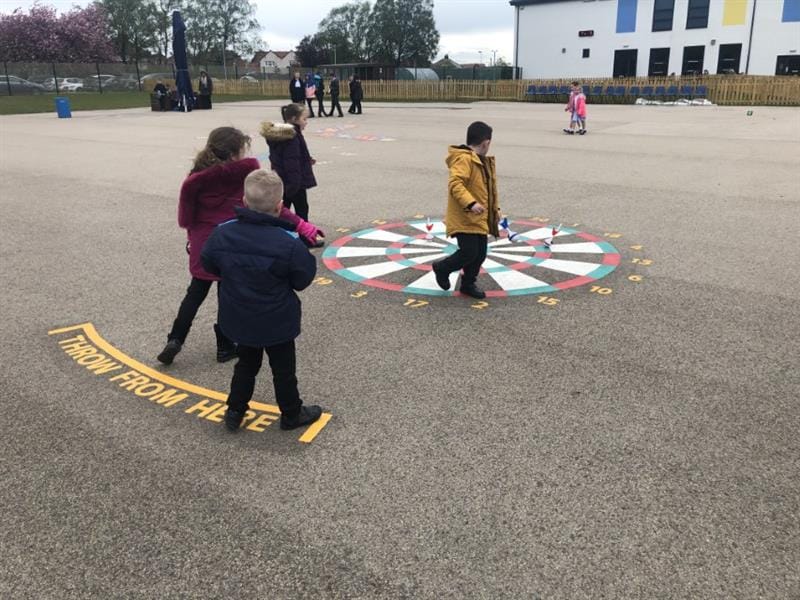
Transporting
Children working in this schema enjoy repeatedly moving resources around from one place to another whether in bags, containers, their own hands/pockets or vehicles.
Children will often carry many objects at a time and may like using prams, wheelbarrows, trucks and a variety of different containers to move objects.
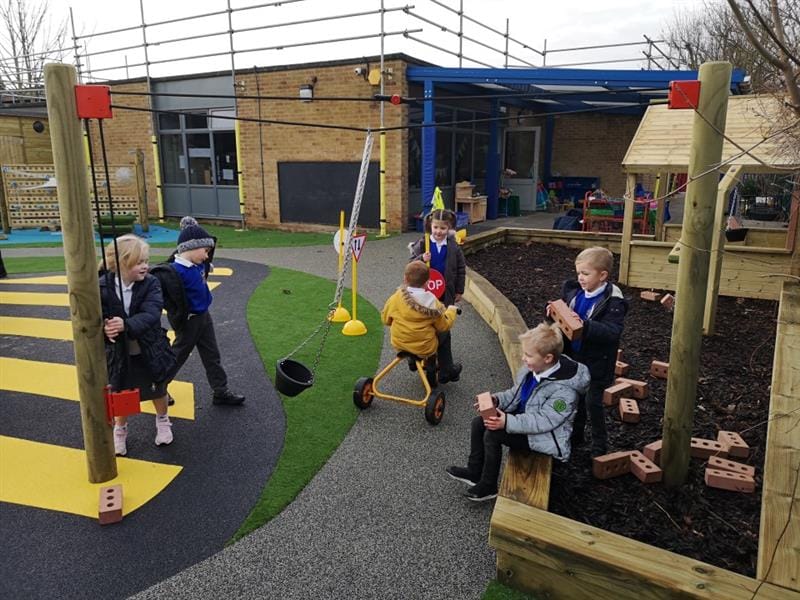
Pupils will enjoy opportunities for transferring leaves or stones in the playground.
They could go on a nature walk and collect different treasures.
A small world construction site is a great place for moving materials, learners could even draw or build a road to transport things along.
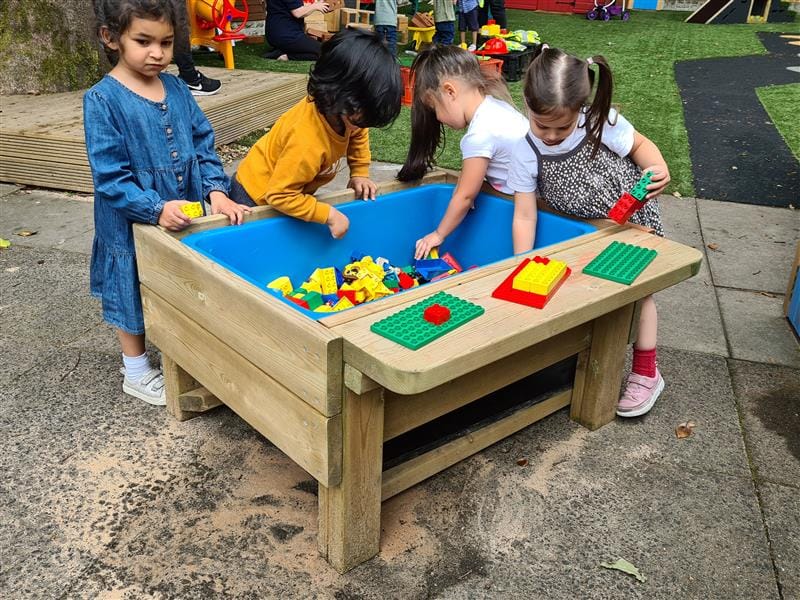
Small animals, bricks and boats can be sent down Pentagon’s water channels which encourages pupils to experiment with water flow.
Enclosing
Within this schema children show an interest in enclosed spaces.
They may build homes for their toy animals or build a train track with animals in the centre.
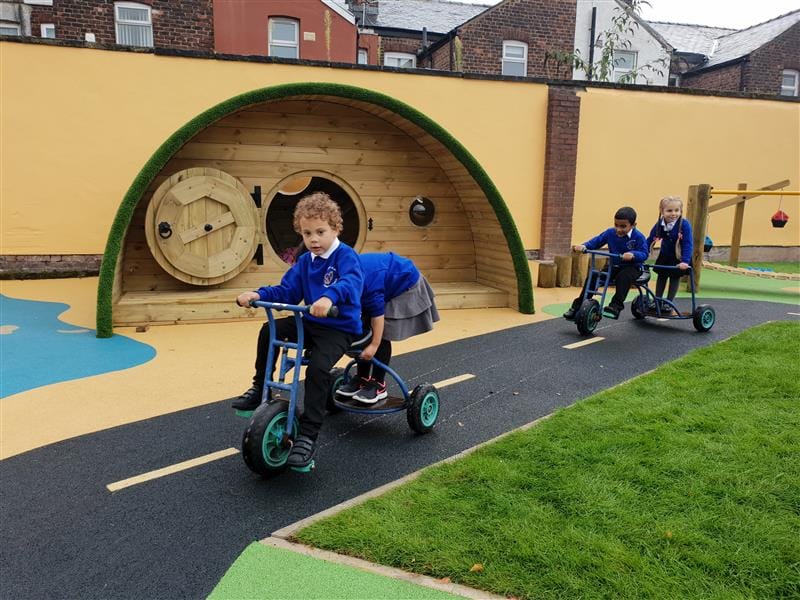
Adding a variety of loose parts to your setting such as blocks, pebbles and lolly sticks can be useful when building enclosures in small world play.
Children can build walls/boundaries around themselves by using blocks or playing with tents, tunnels and cardboard boxes.
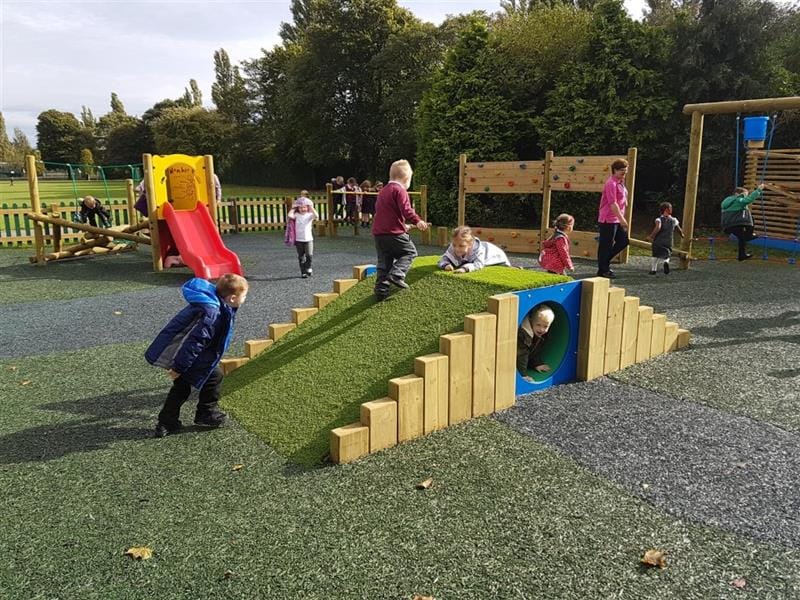
Students will enjoy building dens out of cushions and cardboard boxes.
Pentagon’s Den Making Posts are perfect for creating enclosed spaces in the outdoor environment.
Children may draw lines or borders around objects and images. Sticks can be used outside to draw enclosures in mud or sand.
Practitioners can provide shoe boxes for children to build homes for their small world toys or allow pupils to use play dough to create caves.
Rotational
Children in a rotational schema may show a preference for turning taps on and off, unscrewing lids, winding and unwinding string, drawing circles or playing with hoops.
They may be fascinated with physically turning and twisting and enjoy moving in a circle or rolling down a hill. Children may develop interests in things that turn such as wheels, windmills and washing machines.
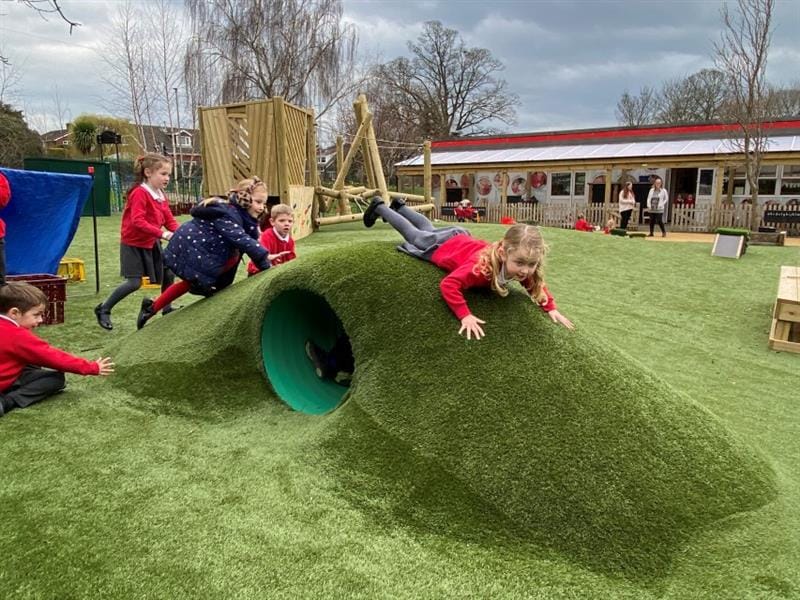
Practitioners can allow pupils opportunity to play with wheels – large tyres and toy cars. Providing spinning toys and cogs would be useful and pupils would enjoy spin art using a salad spinner.
Learners in this schema can observe a range of items including musical boxes, kaleidoscopes and shells.
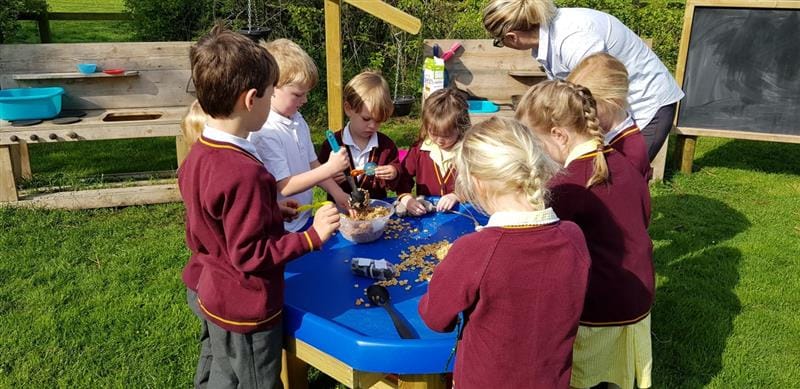
Enveloping/Containing
Children with an enveloping schema are interested in covering and hiding items, including themselves.
They will repeatedly wrap objects or themselves in fabric, scarves, sheets, or paper. They will enjoy dressing up and filling containers or bags with objects or water during water play.
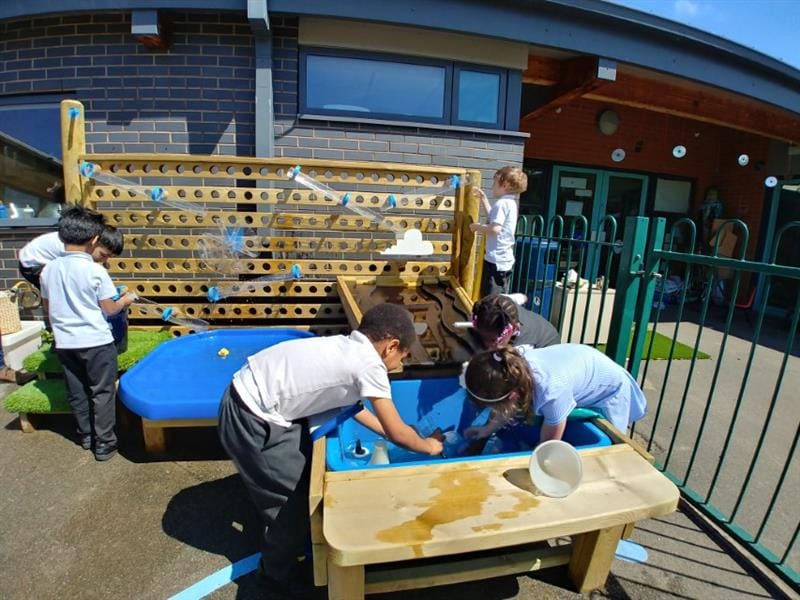
Learners like to post objects inside containers and baskets, they may draw a picture which they will completely cover with paint.
Practitioners can provide opportunities for children to wrap presents, swaddle dolls and teddies with blankets.

A variety of everyday objects such as pegs, coins, wooden dolls or pine cones can be given to children to wrap, hide and fill containers and bags with.
Posting and nesting toys, Russian dolls and shape sorters will be interesting for children in this schema.
Orientation
A child may like to view things from different angles such as hanging upside down or putting their head between their legs.
They may enjoy seeing things from a different viewpoint – from up high, down low, under a table or through binoculars or a magnifying glass.
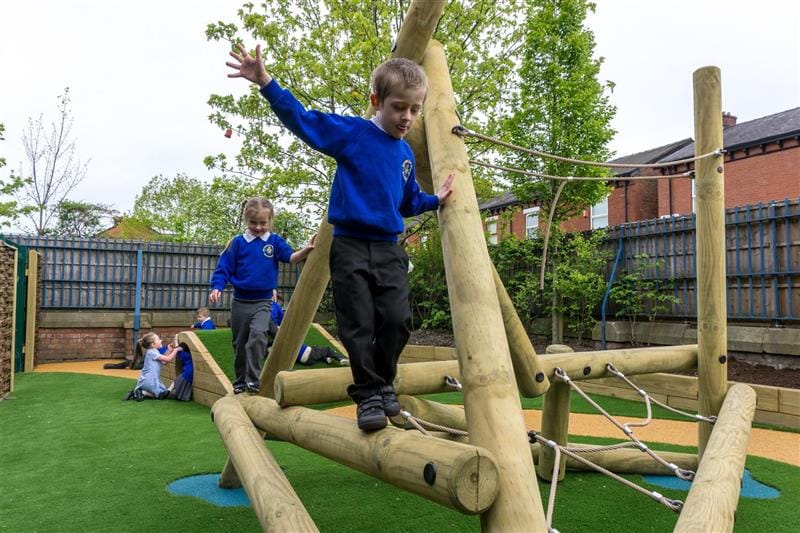
Gross motor play which allows children to climb, roll and tumble supports this schema.
Pentagon’s Trim Trails, Roll Over Bars and Play Towers provide wonderful opportunities for exploration within this schema.
Children may enjoy making their own cardboard binoculars to hunt for minibeasts or playing eye spy games from different viewpoints such as from the top of the Treehouse or inside the Tunnel.

Connecting
A child may enjoy making objects ‘connect.’ Children may be drawn to Lego/ Duplo blocks or train tracks.
They may like connecting blocks to build towers, linking toys to build a chain or using string to link items. Pupils may also like disconnecting and pulling structures apart.
Children working in this schema may enjoy threading and pegging activities.
They could make pasta jewellery by threading on to string or peg photographs or dolls clothes onto washing lines. Crafts involving gluing and taping pieces together would spark interest and models could be made from recycled materials.

Pupils may enjoy using a hole punch to thread pieces of paper, cake cases or straws together or to make a mobile.
Positioning
In this schema children can be seen positioning, ordering and arranging objects or themselves. A child may be concerned with placing objects in an ordered fashion by lining up toys or colour sorting materials.
Children may be obsessive when placing items in the exact place such as next to, on top of or around the edge. Some children may not want their food to be touching on the same plate.
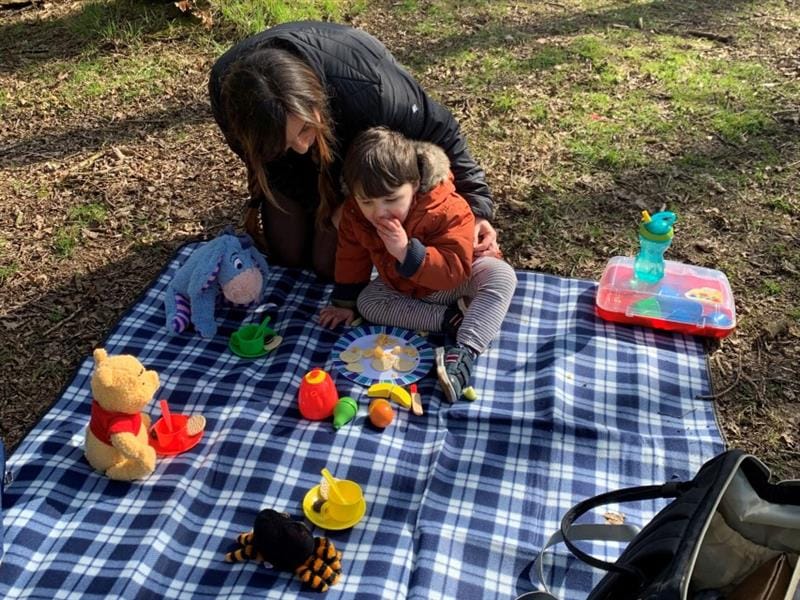
Practitioners can provide invitations to organise items for example by colour, size or texture. Taped lines could be added to table tops and floor spaces for pupils to line loose parts on and peg boards could be used for pattern making.
Transforming
Children will be interested in what happens when things ‘change.’
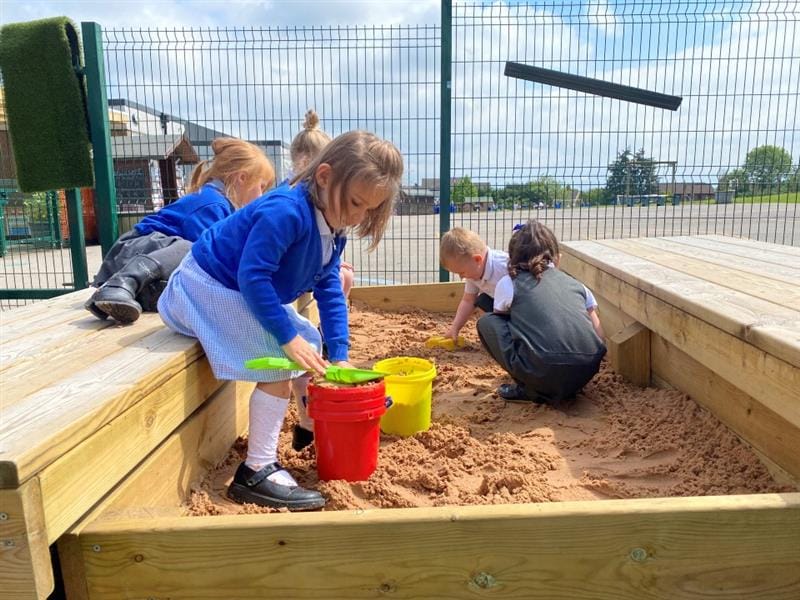
Practitioners can provide opportunities for pupils to mix mud, leaves and water in the Mud Kitchen, make things from playdough or they make like to explore scientific reactions such as baking powder and vinegar.
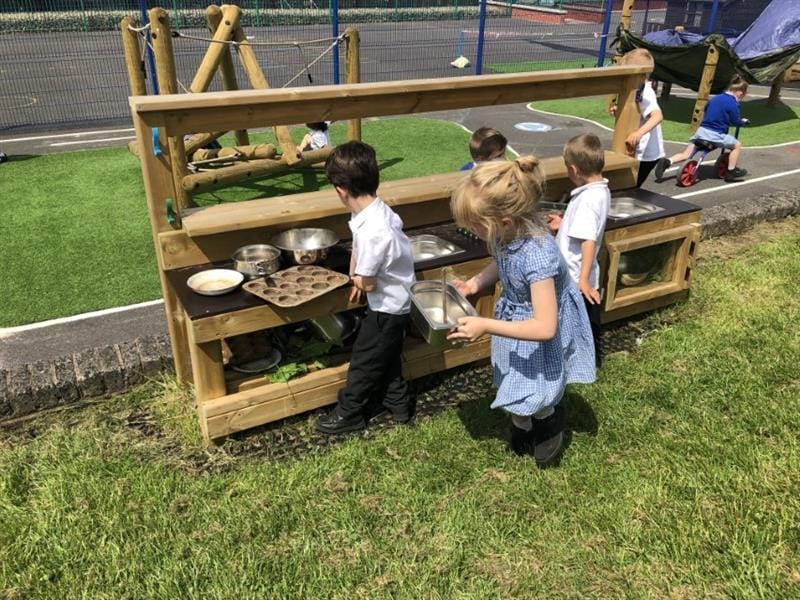
Mixing colours using different coloured water or paint will be enjoyable and watching ice melt during ice play will develop interest and encourage scientific thinking.
Observing children in schematic play can help to identify where children’s learning interests lie and allows us to provide opportunities to engage and enhance children’s learning.
The revised EYFS framework states that ‘practitioners must stimulate children’s interests, responding to each child’s emerging needs and guiding their development.’
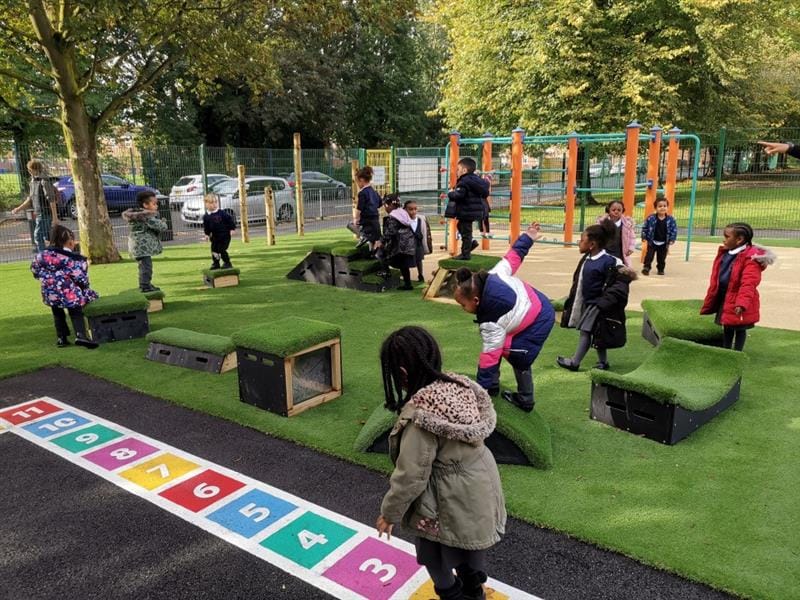
Schematic play allows children to explore their world and take risks. Schemas are constantly being strengthened through engagement, collaborative working, testing and investigating.
If practitioners can build upon children’s interest shown in schemas powerful learning can take place.
